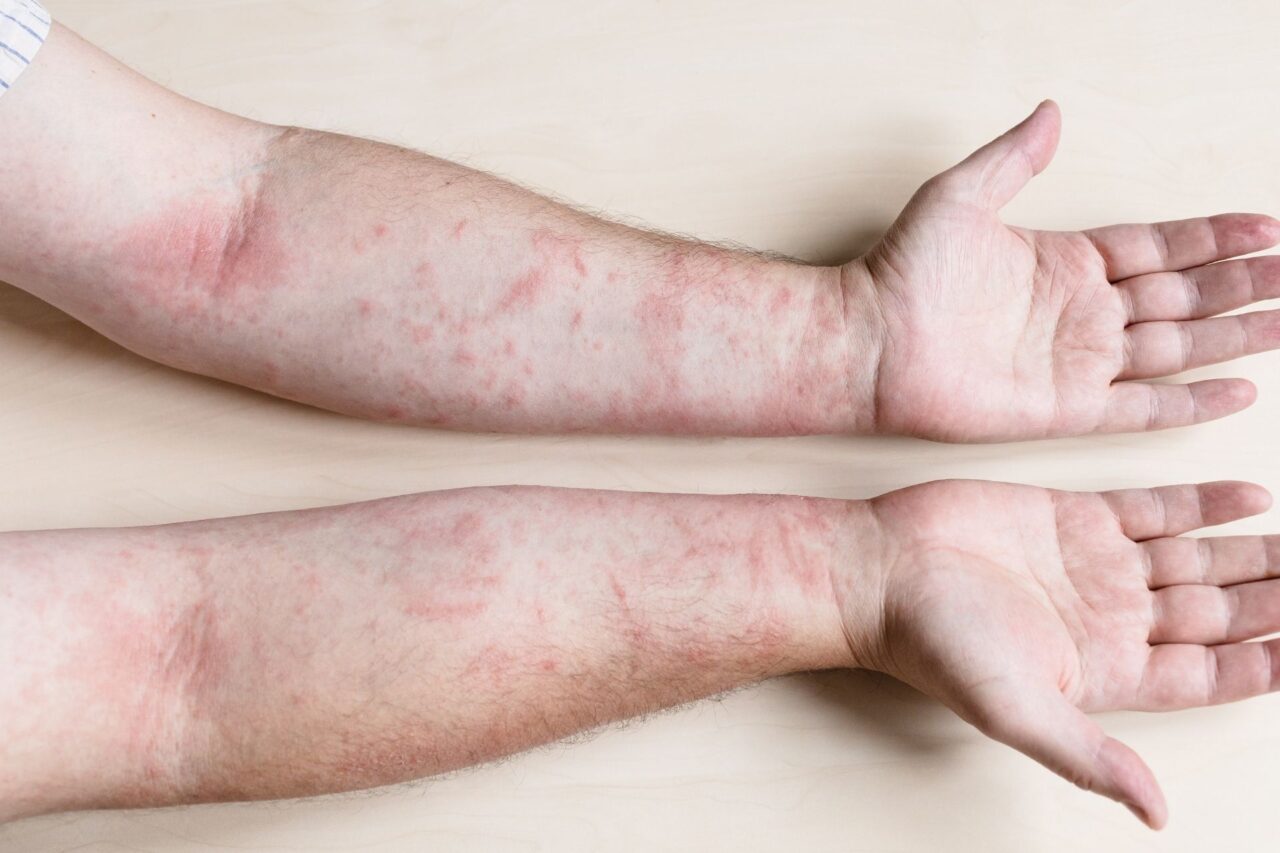Introduction
Reactive Perforating Collagenosis is a skin condition that often flies under the radar, its symptoms masked by other skin issues. In this in-depth article, we unveil the elusive symptoms of Reactive Perforating Collagenosis (RPC) and provide valuable insights to help you recognize and understand this condition better.

Symptoms Of Reactive Perforating Collagenosis
Understanding the symptoms of Acquired Reactive Perforating Collagenosis (ARPC) is crucial for its timely detection and effective treatment. Let’s explore the key indicators:
1. Skin Lesions
The hallmark of the acquired form of Reactive Perforating Collagenosis is the presence of unique skin lesions, often appearing as papules or nodules. These lesions, typically found in Acquired Reactive Perforating Collagenosis, are often small, firm, dome-shaped, characterized by a central depression or umbilication.
2. Itching (Pruritus)
Patients with the acquired form of Reactive Perforating Collagenosis usually suffer from intense itching, also known as pruritus, at the site of the skin lesions. This itching can be severe, significantly impacting the patient’s overall quality of life.
3. Skin Discharge
The skin lesions may exhibit a central crater or depression, leading to the development of a discharge or crust. This discharge can vary in color and consistency and may be accompanied by a foul odor.
4. Complications
In certain cases, Reactive Perforating Collagenosis may give rise to complications, including:
- Secondary infection of the lesions
- Hyperpigmentation or scarring of the affected skin
- Discomfort or pain at the site of the lesions
5. Location
While Reactive Perforating Collagenosis lesions are commonly found on the extensor surfaces of the arms and legs, as well as the trunk, they may also appear in other areas of the body.
It is important to note that the symptoms of Reactive Perforating Collagenosis can vary from person to person. The condition may present differently in different individuals. If there is a suspicion that you or someone you know may have Reactive Perforating Collagenosis, seeking medical attention is crucial for a proper diagnosis and the formulation of an effective management plan.
Remember, early detection and intervention play a key role in improving outcomes for individuals with Reactive Perforating Collagenosis. If you notice any of these symptoms, consult with a healthcare professional promptly for personalized guidance and care.
Living with Reactive Perforating Collagenosis
Life with RPC can be challenging, but understanding the symptoms and seeking medical guidance can significantly improve your quality of life
– Seek medical guidance for proper diagnosis and treatment
– Understand and monitor symptoms such as itchy papules, ulcerated lesions, and scarring
– Follow a treatment plan prescribed by a dermatologist or specialist
– Manage symptoms by keeping skin clean and moisturized
– Avoid scratching or picking at lesions to prevent further damage
– Seek support from family, friends, or support groups to cope with the emotional impact of RPC
– Stay informed about new treatment options and research for RPC
– Practice self-care and maintain a positive outlook on managing RPC
– Stay vigilant in monitoring for any changes or developments in symptoms
– Be patient and persistent in finding the right treatment plan for managing RPC .
Conclusion
Unmasking Reactive Perforating Collagenosis: Symptoms Unveiled sheds light on a skin condition that often goes undiagnosed. Recognizing the symptoms, seeking professional guidance, and understanding treatment options are essential steps in managing RPC. By sharing this knowledge, we hope to improve the lives of those affected by this condition.
Frequently Asked Questions
Q: Can RPC go away on its own? A: RPC typically requires medical attention and doesn’t resolve on its own.
Q: Are there any home remedies for RPC? A: It’s essential to consult a dermatologist for proper treatment. Home remedies may not be effective.
Q: Is RPC contagious? A: No, RPC is not contagious. It’s a non-communicable skin condition.
Q: Can RPC be a sign of a more severe underlying condition? A: Yes, RPC is associated with underlying health issues, so it’s crucial to seek professional evaluation.
Q: How can I prevent RPC? A: Prevention involves managing underlying conditions and maintaining good skin hygiene.
Q: Is RPC common? A: RPC is relatively rare but can affect individuals with certain medical conditions.
Conclusion
Unmasking Reactive Perforating Collagenosis: Symptoms Unveiled sheds light on a skin condition that often goes undiagnosed. Recognizing the symptoms, seeking professional guidance, and understanding treatment options are essential steps in managing RPC. By sharing this knowledge, we hope to improve the lives of those affected by this condition.




